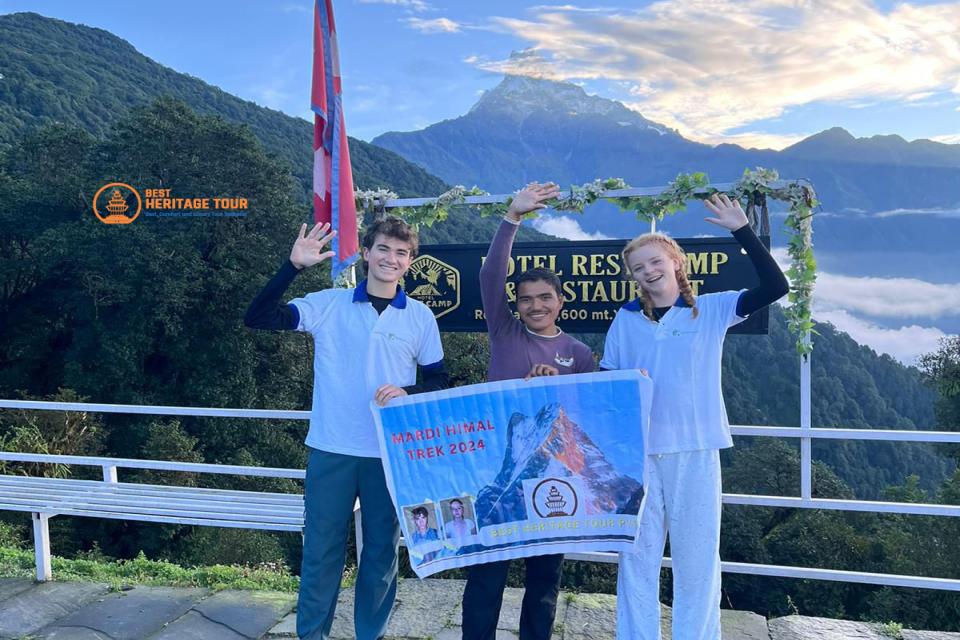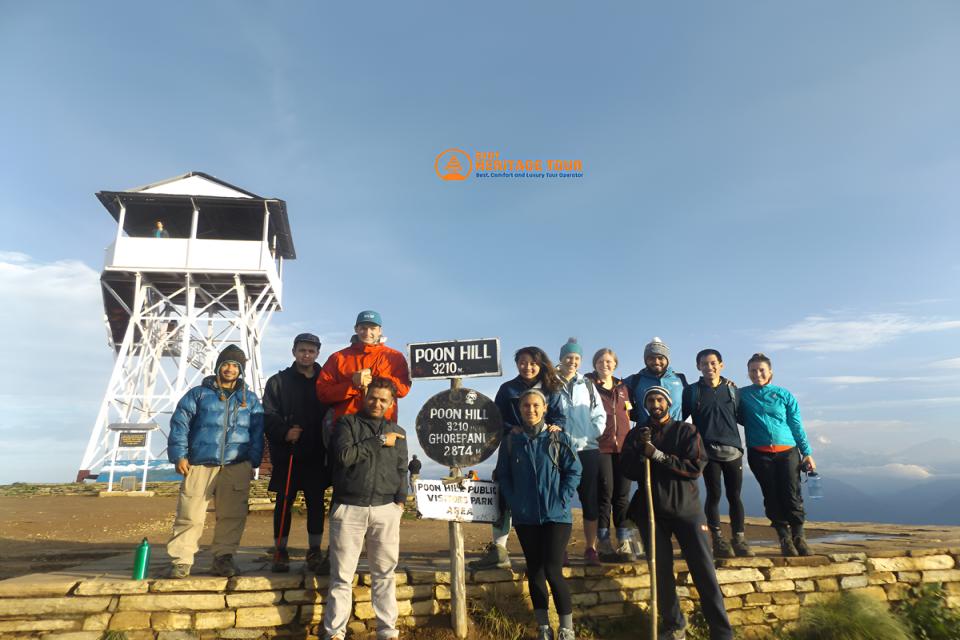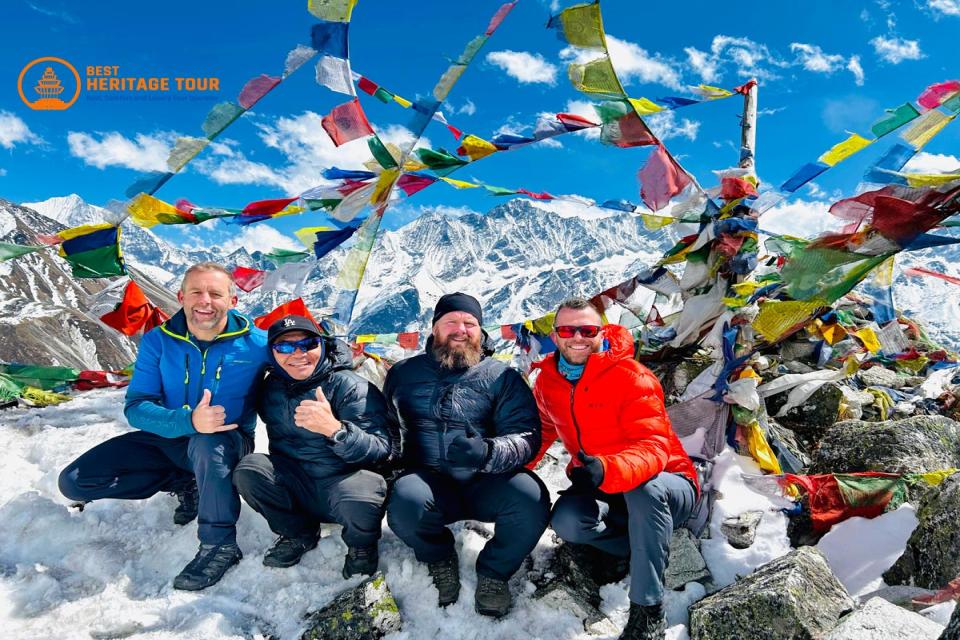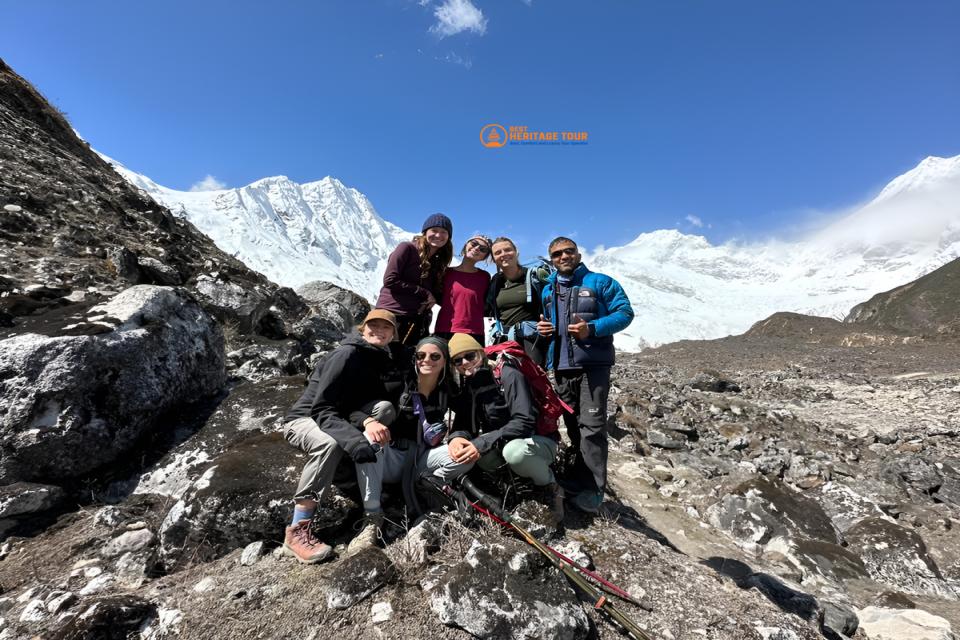In today’s connected world, it’s hard to imagine going days without checking your messages, sharing updates, or looking up information online. But what happens when you head deep into the majestic Himalayas, far from cities and modern infrastructure? Many trekkers planning to explore Nepal’s legendary trekking routes - like the Everest Base Camp, Annapurna Circuit, or Langtang Valley - wonder: Will I get Wi-Fi or mobile data during my trek?
Good news - the days of total digital isolation in the Himalayas are slowly fading. While Nepal’s mountains are still some of the most remote places on earth, access to Wi-Fi and mobile networks has improved dramatically in recent years. Still, it’s not the same as city-level connectivity - and knowing what to expect will save you a lot of frustration.
This detailed guide from Best Heritage Tour walks you through everything you need to know about Wi-Fi and mobile data on Nepal treks - from which networks work best to where you can connect and how to prepare smartly for your adventure.
The Importance of Staying Connected on Nepal Treks
Once upon a time, trekking in Nepal meant complete disconnection from the world - no phones, no emails, and no internet. Trekkers relied on postcards or satellite calls from rare outposts to contact home. But in the digital era, staying connected has become a basic need for many travelers.
Being online during your trek is not only about uploading pictures to Instagram or sending updates to friends - it’s also about safety, navigation, and communication. Having data access allows you to:
-
Check trail routes and altitudes on offline maps.
-
Stay updated about weather forecasts or flight delays.
-
Contact your guide, travel agency, or family in case of emergency.
-
Manage digital payments, bookings, and logistics.
-
Share experiences in real time, from the heart of the Himalayas.
However, it’s essential to understand that internet in Nepal’s mountain regions is still limited, patchy, and often slow. So, while it’s possible to stay connected, you must manage your expectations - and prepare accordingly.
Wi-Fi Access During Treks in Nepal
Wi-Fi is now available on almost all popular trekking routes in Nepal, but the quality, speed, and price vary greatly depending on how remote you are.
How Wi-Fi Works in the Himalayas
In most trekking regions, teahouses and lodges provide Wi-Fi through satellite connections or local providers like Everest Link and WorldLink. You’ll find Wi-Fi in most villages, but it may not always work reliably due to weather, power cuts, or technical issues.
Wi-Fi on Popular Trekking Routes
Everest Base Camp Trek
The Everest region is the most advanced in terms of connectivity. The locally operated Everest Link Wi-Fi system provides paid internet service across many lodges and teahouses from Lukla to Gorak Shep.
You can purchase Everest Link cards with prepaid data (usually 200 MB to 1 GB) that you can use in multiple locations. Expect to pay around NPR 600-1000 for 1 GB, depending on altitude. The connection is generally reliable up to Tengboche or Dingboche, though it weakens near Lobuche and Gorak Shep.
Annapurna Circuit and Annapurna Base Camp Trek
The Annapurna region has moderate Wi-Fi coverage. In lower altitudes like Pokhara, Besisahar, and Ghorepani, you’ll easily find free Wi-Fi in lodges and restaurants.
As you ascend toward Manang, Thorong Phedi, or Annapurna Base Camp, Wi-Fi becomes slower and sometimes paid. Some lodges charge around NPR 300-500 per connection. Ncell mobile data often works better up to certain points than Wi-Fi.
Langtang Valley Trek
The Langtang region offers decent Wi-Fi up to Kyanjin Gompa. Most teahouses provide Wi-Fi either free or for a small fee, though speed drops as you go higher. Ncell and NTC networks work until Lama Hotel or Riverside area, but not consistently.
Manaslu Circuit, Upper Mustang, and Dolpo Regions
These remote areas are still limited in terms of connectivity. You may get Wi-Fi in select lodges at Samagaun, Lo Manthang, or Kagbeni, but not everywhere. In truly remote zones like Dolpo or Nar Phu Valley, internet is nearly non-existent - you may rely on satellite internet or offline tools only.
Mobile Data and SIM Cards in Nepal
For trekkers who prefer using mobile data instead of Wi-Fi, Nepal offers two main telecom providers - Ncell and Nepal Telecom (NTC). Both have expanded their 4G networks across much of the country, though coverage in mountainous areas remains limited.
1. Ncell
Ncell is a private provider and is often the best choice for travelers. It offers faster internet speeds and better coverage in many trekking regions, especially in the Everest and Annapurna areas.
SIM cards are available at the airport or any Ncell shop in Kathmandu or Pokhara. You’ll need your passport and a passport-size photo for registration.
Popular data packages include:
-
1 GB for NPR 300 (valid 7 days)
-
5 GB for NPR 950 (valid 30 days)
You can easily top up using recharge cards or online via eSewa, Khalti, or Ncell’s mobile app.
2. Nepal Telecom (NTC)
NTC is the government-operated provider, known for having better coverage in rural and high-altitude zones, but speeds are generally slower than Ncell.
NTC also offers 4G data in many trekking gateways like Lukla, Namche, Jomsom, and Ghorepani, but signals fluctuate.
Where and How to Buy SIM Cards
-
Buy SIM cards only from official counters or authorized shops.
-
Carry your passport for verification.
-
Insert and activate the SIM before leaving Kathmandu or Pokhara - as connectivity might not work right away.
-
Check APN settings for internet access and recharge balance before the trek.
Roaming Options
International roaming is available but very expensive. Instead of using your home SIM, it’s best to buy a local SIM card to save money and ensure stronger coverage.
Which Is Better - Wi-Fi or Mobile Data?
Both Wi-Fi and mobile data have pros and cons depending on where you are trekking.
|
Criteria |
Wi-Fi |
Mobile Data |
|---|---|---|
|
Availability |
Found in teahouses/lodges |
Works where towers exist |
|
Speed |
Moderate to slow |
Faster in lower regions |
|
Cost |
Usually paid |
Affordable prepaid packs |
|
Reliability |
May fluctuate |
Stable in lowlands |
|
Best Use |
Uploads, messaging |
Navigation, calls, WhatsApp |
Verdict: For most trekkers, a combination of both is ideal. Use Wi-Fi in lodges during evenings and mobile data on the trail when signals are available. This balance gives you the most reliable coverage across Nepal’s mountains.
Internet Access on Popular Trekking Routes (Detailed Overview)
Everest Region
-
Wi-Fi: Available through Everest Link in almost every village.
-
Mobile Data: Ncell works till Namche Bazaar; patchy beyond Dingboche.
-
Tip: Buy Everest Link data cards in Lukla or Namche before heading higher.
Annapurna Region
-
Wi-Fi: Found in most teahouses, free at lower altitudes.
-
Mobile Data: Ncell 4G works until Manang and Ghorepani; weak beyond Thorong La.
-
Tip: Combine Ncell SIM + lodge Wi-Fi for consistent connection.
Langtang Region
-
Wi-Fi: Available in every main stop till Kyanjin Gompa.
-
Mobile Data: Limited coverage after Lama Hotel.
-
Tip: Download offline maps before trekking.
Manaslu Region
-
Wi-Fi: Paid Wi-Fi at Samagaun and Lho; weak above that.
-
Mobile Data: Minimal; mostly unavailable in higher areas.
-
Tip: Bring a power bank and rely on offline resources.
Upper Mustang & Dolpo
-
Wi-Fi: Available in few lodges; slow and unreliable.
-
Mobile Data: Very limited or none.
-
Tip: Use local guide’s satellite phone for emergency communication.
Power Supply and Charging Options
Internet access is useless without power to keep your devices charged! On treks, especially at high altitudes, electricity is not always guaranteed.
-
Charging Costs: Expect to pay NPR 200-500 per hour in lodges.
-
Power Sources: Most teahouses use solar panels.
-
Bring:
-
A power bank (10,000-20,000 mAh)
-
A multi-pin adapter (Type C or D)
-
Portable solar charger if you’re going remote
-
-
Turn on airplane mode when not using your phone to save battery.
Useful Apps and Tools for Trekking Connectivity
Even when you don’t have internet, certain apps can make your trekking experience safer and easier. Here are the top recommendations:
-
Maps.me / Gaia GPS / AllTrails - Offline maps for navigation.
-
WhatsApp & Messenger Lite - Work on weak connections for texting and calls.
-
Windy / AccuWeather - Weather updates for high-altitude regions.
-
Google Translate - Handy for communicating with locals.
-
PeakFinder / Altimeter - Identify mountains and monitor elevation.
-
Red Cross SOS / bSafe - Emergency communication apps.
Tips for Staying Connected Wisely
-
Download offline maps and music before you trek.
-
Use flight mode when not browsing to save battery and data.
-
Backup photos daily to a memory card or cloud when Wi-Fi is available.
-
Buy Everest Link or data cards early - prices rise with altitude.
-
Embrace the digital detox - sometimes, it’s okay to switch off and enjoy nature’s peace.
Remember: while staying connected is useful, the magic of the Himalayas lies in disconnecting from screens and connecting with nature.
The Digital Himalayas Are Catching Up
Over the past decade, Nepal’s mountain regions have made incredible progress in digital connectivity. What was once a complete communication blackout is now dotted with Wi-Fi spots, 4G towers, and reliable data networks. While speeds remain modest, and outages are common, staying connected during Nepal treks is now more possible than ever before.
That said, the beauty of trekking in Nepal lies in simplicity - the stillness of the mountains, the rhythm of footsteps, the sound of prayer flags fluttering in the wind. Use the internet as a tool, not a distraction. Stay safe, informed, and inspired - but don’t forget to unplug and let the Himalayas speak for themselves.
Plan Your Connected Trek with Best Heritage Tour
If you’re planning your next trekking adventure in Nepal and want a well-organized, safe, and unforgettable journey, Best Heritage Tour is here to make it happen. From arranging permits and guides to providing updated travel information - including the best Wi-Fi and data options - we ensure your experience is smooth and worry-free.
Phone / WhatsApp / Viber: +977-9851149197 / +977-9810043046
Email: info@bestheritagetour.com / bestheritagetour@gmail.com
Website: www.bestheritagetour.com
Office: Thamel Marg, Kathmandu, Nepal
Whether you’re trekking to Everest Base Camp, exploring the Annapurna Sanctuary, or wandering through the Langtang Valley, we’ll make sure you stay connected - both with nature and the world beyond.
Author: Best Heritage Tour
Date: 11th November, 2025












